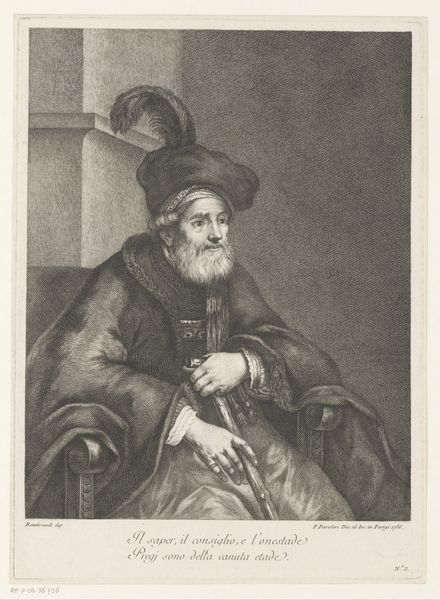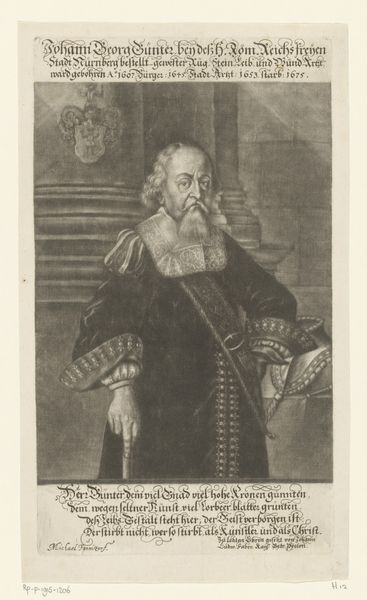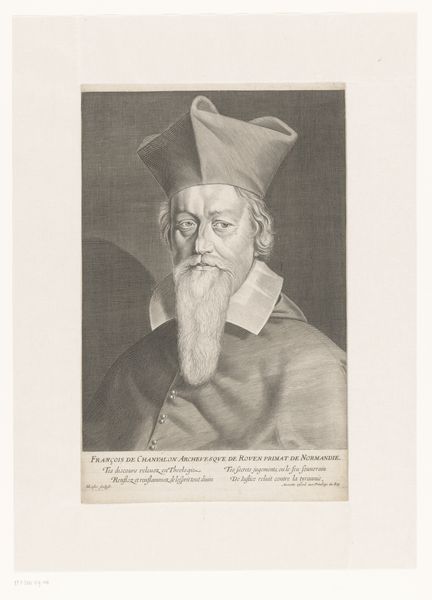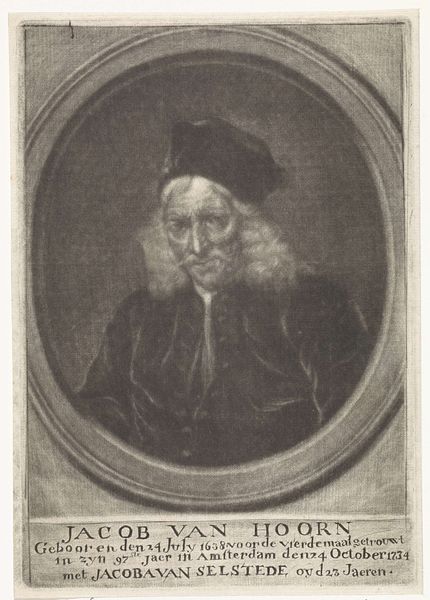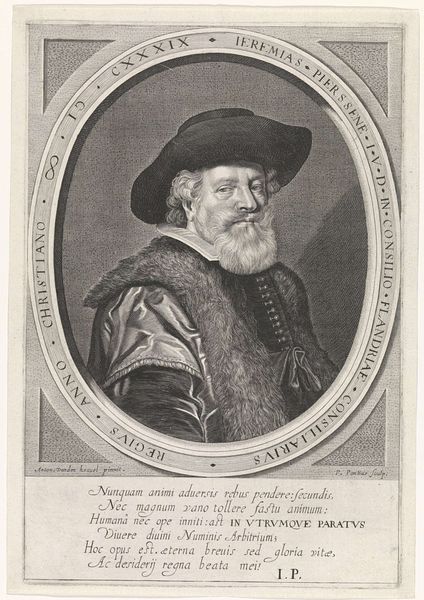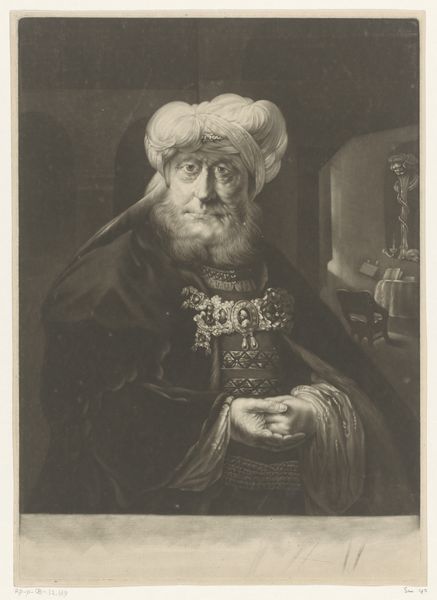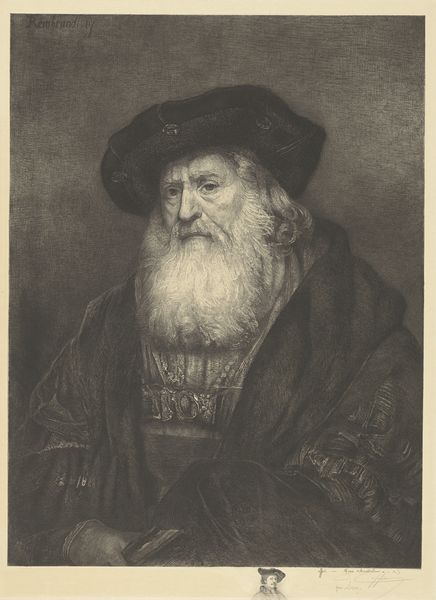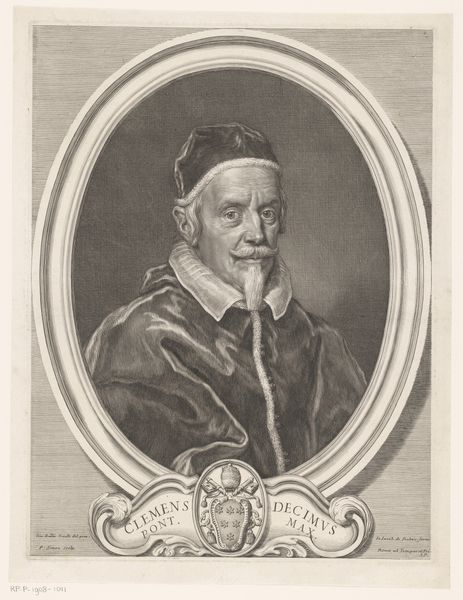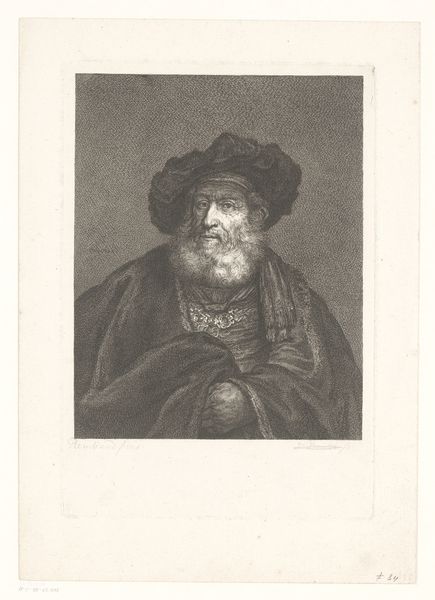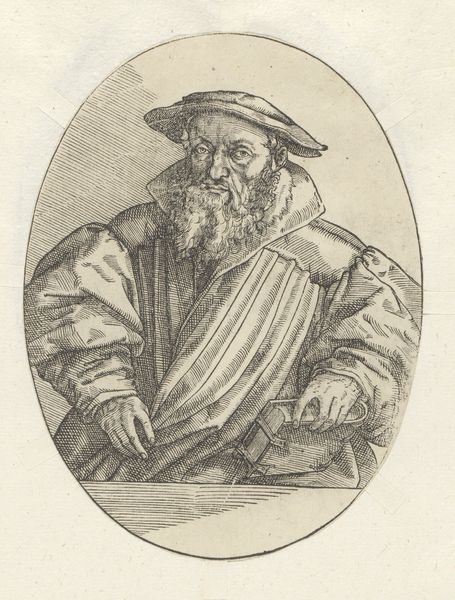
Dimensions: height 357 mm, width 259 mm
Copyright: Rijks Museum: Open Domain
Editor: This print, "Portret van een onbekende oude man, mogelijk Harmen Gerritsz. van Rijn," from 1766-1767, is striking. The artist created it on paper using engraving, and I'm captivated by the incredible detail achieved with this medium. How does the choice of printmaking impact our understanding of this work? Curator: The material and the process of printmaking are indeed crucial. Engravings, unlike unique paintings, were inherently reproducible. Think about the socio-economic context: this wasn’t just art, it was a commodity produced to be distributed, consumed, and perhaps to elevate the status of both the portrayed subject and the artist's name by association. How does that potential for wider circulation shift your perspective? Editor: It definitely makes me reconsider its function! So, instead of a unique, personal portrait, this engraving might have served a broader purpose, reaching a larger audience, possibly used to solidify social standing? Curator: Precisely! Consider the labor involved – the engraver's skill, the paper production, the distribution networks. It's not solely about artistic expression; it's about a whole system of production and consumption. Does seeing the portrait this way, thinking about its production as much as its image, change how you view the subject depicted? Editor: It does! Focusing on the material process takes away from the individual depicted and highlights societal factors. The choice of engraving for the portrait suggests a desire to create a lasting and easily distributed representation of wealth and influence in that historical moment. It's less about the individual sitter and more about what they represent. Curator: Absolutely. It compels us to see the sitter not as a solitary figure but as embedded within a web of material relations, artistic labor, and modes of distribution that shaped how people were viewed and valued. Editor: I hadn't thought about art in terms of labor and commodity like that. Seeing the material aspects really reveals the systems at play! Curator: It's all intertwined! And understanding these dynamics provides a much deeper engagement with art than just aesthetic appreciation.
Comments
No comments
Be the first to comment and join the conversation on the ultimate creative platform.
